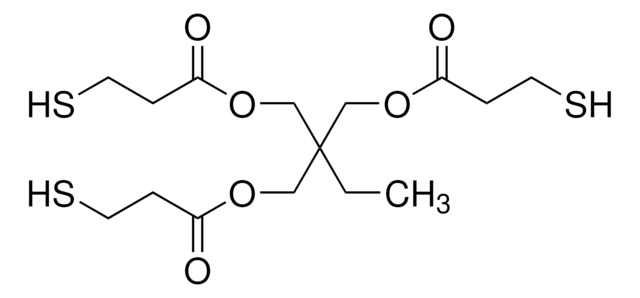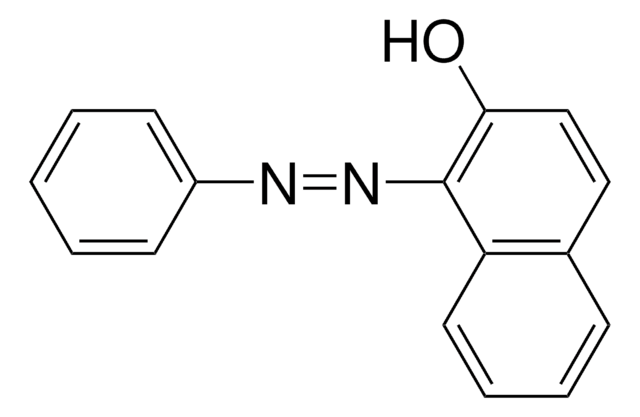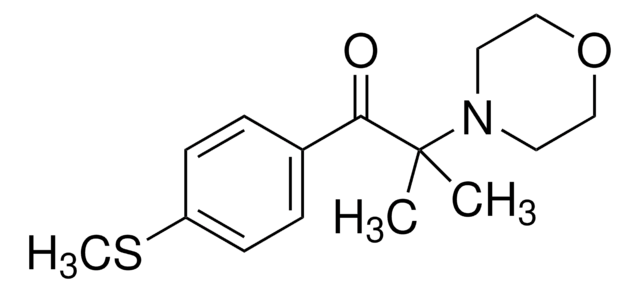Kluczowe dokumenty
511447
Phenylbis(2,4,6-trimethylbenzoyl)phosphine oxide
97%, powder
Synonim(y):
BAPOs, Bisacylphosphine oxides
About This Item
Polecane produkty
Poziom jakości
Próba
97%
Formularz
powder
powder, crystals or chunks
mp
131-135 °C (lit.)
rozpuszczalność
acetone, acetonitrile, toluene, and hexanediol diacrylate: soluble
ciąg SMILES
Cc1cc(C)c(c(C)c1)C(=O)P(=O)(C(=O)c2c(C)cc(C)cc2C)c3ccccc3
InChI
1S/C26H27O3P/c1-16-12-18(3)23(19(4)13-16)25(27)30(29,22-10-8-7-9-11-22)26(28)24-20(5)14-17(2)15-21(24)6/h7-15H,1-6H3
Klucz InChI
GUCYFKSBFREPBC-UHFFFAOYSA-N
Szukasz podobnych produktów? Odwiedź Przewodnik dotyczący porównywania produktów
Powiązane kategorie
Opis ogólny
Zastosowanie
- Radical polymerization of dental resins. BAPO enhances the polymerization rate and conversion compared to other initiators.
- Preparation of divinylbenzene modified polymer-based ceramic materials for high temperature sensor applications.
Hasło ostrzegawcze
Warning
Zwroty wskazujące rodzaj zagrożenia
Zwroty wskazujące środki ostrożności
Klasyfikacja zagrożeń
Aquatic Chronic 4 - Skin Sens. 1
Kod klasy składowania
11 - Combustible Solids
Klasa zagrożenia wodnego (WGK)
WGK 1
Środki ochrony indywidualnej
dust mask type N95 (US), Eyeshields, Faceshields, Gloves
Wybierz jedną z najnowszych wersji:
Masz już ten produkt?
Dokumenty związane z niedawno zakupionymi produktami zostały zamieszczone w Bibliotece dokumentów.
Klienci oglądali również te produkty
Produkty
The manufacture of monomers for use in ophthalmic applications is driven by the need for higher purity, improved reliability of manufacturing supply, but ultimately by the need for the increased comfort, convenience, and safety of contact lens wearers. Daily wear contact lenses have the potential to fill this need for many customers; however, their widespread use is constrained by higher costs compared to weekly- or monthly-based lenses. New approaches that improve cost structure and result in higher quality raw materials are needed to help make contact lenses more affordable and accelerate growth of the contact lens market.
Global Trade Item Number
| SKU | GTIN |
|---|---|
| 511447-10G | 4061832491264 |
| 511447-50G | 4061835563241 |
Nasz zespół naukowców ma doświadczenie we wszystkich obszarach badań, w tym w naukach przyrodniczych, materiałoznawstwie, syntezie chemicznej, chromatografii, analityce i wielu innych dziedzinach.
Skontaktuj się z zespołem ds. pomocy technicznej

















